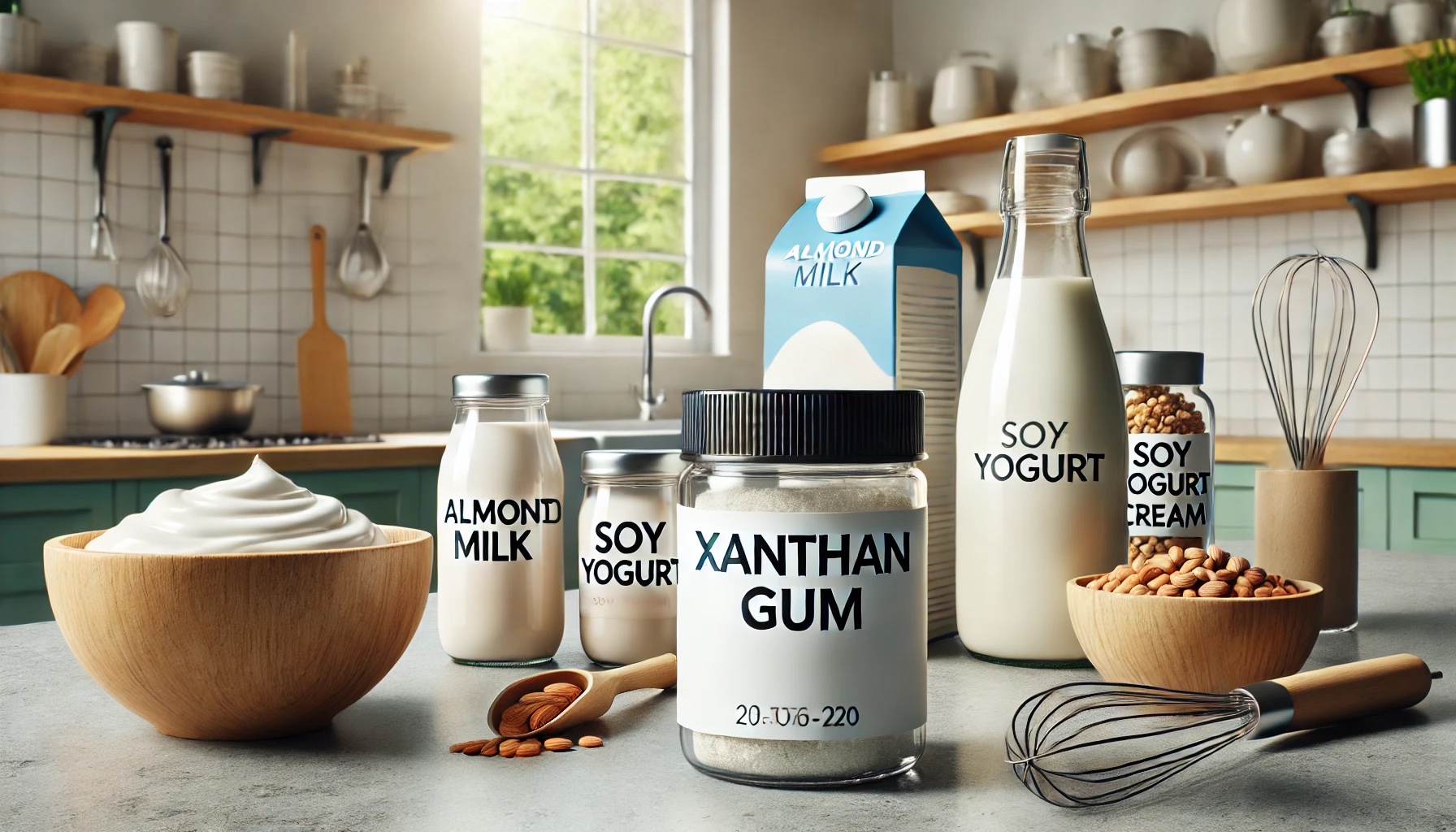1. What is pectin?
It is a natural polysaccharide found in the cell walls of fruits, particularly citrus fruits and apples.
It is used as a gelling agent, thickener, and stabilizer in food products.
2. How is pectin extracted?
It is extracted from fruit peels, primarily citrus or apple, through an acidic extraction process.
The peel is first washed and dried, then treated with acid to extract the pectin.
The solution is then filtered, concentrated, and precipitated using alcohol before being dried and ground into a powder.
3. What are the different types of pectin?
The two main types of pectin are High Methoxyl (HM) and Low Methoxyl (LM).
HM pectin requires sugar and acid to gel, while LM pectin can gel with the presence of calcium ions, making it suitable for low-sugar or sugar-free products.
4. What are the applications of pectin in the food industry?
It is used in jams, jellies, fruit preserves, dairy products, beverages, and confectionery to provide texture, stability, and gel formation.
5. What is the role of pectin in jam and jelly production?
It acts as a gelling agent, helping jams and jellies to set and achieve the desired consistency.
It interacts with sugar and acid to form a gel matrix that traps water and other ingredients.
6. How does pectin gel formation work?
Pectin molecules form a network through hydrogen bonding and ionic interactions.
In HM pectin, gel formation is facilitated by the presence of sugar and acid. In LM pectin, calcium ions create cross-links between pectin chains.
7. What is the difference between high methoxyl (HM) and low methoxyl (LM) pectin?
HM pectin has a high degree of esterification (>50%) and requires high sugar content and low pH to gel.
LM pectin has a low degree of esterification (<50%) and can gel in the presence of calcium ions, making it suitable for low-sugar applications.
8. What are the sources of commercial pectin?
The primary sources of commercial pectin are citrus fruits (orange, lemon, lime) and apples.
9. How does pectin contribute to the texture of dairy products?
Pectin stabilizes dairy products by preventing whey separation and improving mouthfeel.
It forms a network that holds water and milk proteins, providing a smooth and creamy texture.
10. Can pectin be used in beverages?
Yes, pectin is used in beverages to stabilize suspensions, prevent sedimentation, and improve mouthfeel.
It is commonly used in fruit juices and drinkable yogurts.
11. What is amidated pectin?
Amidated pectin is a modified form of LM pectin where some of the carboxyl groups are converted to amide groups.
This modification improves its gelling properties and reduces the amount of calcium required for gel formation.
12. How does pectin affect the shelf life of food products?
Pectin improves the shelf life of food products by providing stability, preventing syneresis (water separation), and maintaining texture and consistency over time.
13. Is pectin suitable for vegan and vegetarian products?
Yes, pectin is a plant-based ingredient and is suitable for vegan and vegetarian products.
14. How does pectin interact with other ingredients in food formulations?
Pectin interacts with sugars, acids, and calcium ions to form gels.
It can also interact with proteins and other hydrocolloids, affecting texture and stability.
15. What are the benefits of using pectin in confectionery?
In confectionery, pectin provides a desirable chewy texture, improves shelf life, and enhances flavor release.
It is commonly used in gummy candies and fruit snacks.
16. Can pectin be used in gluten-free products?
Yes, pectin is gluten-free and can be used as a thickener and stabilizer in gluten-free products to improve texture and moisture retention.
17. What are the nutritional benefits of pectin?
Pectin is a soluble dietary fiber that can help regulate digestion, lower cholesterol levels, and improve glycemic control.
It also contributes to a feeling of fullness, which can aid in weight management.
18. How does the degree of esterification affect pectin’s properties?
The degree of esterification (DE) affects the gelling properties of pectin.
High DE (HM) pectin requires high sugar and low pH to gel, while low DE (LM) pectin gels in the presence of calcium ions and can be used in low-sugar applications.
19. What is rapid set pectin?
Rapid set pectin is a type of HM pectin that gels quickly upon cooling.
It is ideal for making jams and jellies that require a firm texture and short setting time.
20. What is slow set pectin?
Slow set pectin is a type of HM pectin that gels more slowly, allowing for longer processing times and better flavor incorporation.
It is suitable for products where a more gradual gelation is desired.
21. Can pectin be used in low-calorie and low-sugar products?
Yes, LM pectin is particularly suitable for low-calorie and low-sugar products as it can gel in the presence of calcium ions without the need for high sugar content.
22. How is pectin used in pharmaceutical applications?
In pharmaceuticals, pectin is used as a gelling agent, thickener, and stabilizer in formulations such as gels, tablets, and suspensions.
It also has potential as a drug delivery agent due to its biocompatibility and ability to form gels.
23. What is the role of pectin in fruit spreads and preserves?
Pectin provides the necessary gel structure in fruit spreads and preserves, ensuring they set properly and have the desired consistency.
It also helps maintain the integrity of fruit pieces in preserves.
24. Can pectin be used in baked goods?
Yes, pectin can be used in baked goods to improve moisture retention, extend shelf life, and enhance texture.
It is particularly useful in gluten-free and low-fat baking.
25. What are the regulatory considerations for using pectin in food products?
Pectin is generally recognized as safe (GRAS) by regulatory authorities such as the FDA and EFSA.
However, it is important to comply with local regulations regarding its use, labeling, and allowable levels in food products.
26. How does pectin contribute to the stabilization of fruit juices?
Pectin stabilizes fruit juices by preventing sedimentation and cloud loss.
It helps maintain a uniform appearance and improves mouthfeel.
27. What is the impact of pH on pectin’s gelling properties?
pH significantly impacts pectin’s gelling properties.
HM pectin requires a low pH (2.8-3.5) to gel, while LM pectin can gel at a higher pH (3.0-4.5) in the presence of calcium ions.
28. How does pectin improve the texture of yogurt and other fermented dairy products?
Pectin stabilizes fermented dairy products by preventing whey separation and improving the overall texture, making the product creamier and more consistent.
29. What are the challenges of using pectin in food formulations?
Challenges include achieving the desired gel strength, controlling the setting time, and ensuring compatibility with other ingredients.
Variations in fruit pectin content can also affect consistency.
30. Can pectin be used in combination with other hydrocolloids?
Yes, pectin can be used in combination with other hydrocolloids such as xanthan gum, locust bean gum, and carrageenan to achieve specific textural properties and stability.
31. How does pectin influence the mouthfeel of beverages?
Pectin improves the mouthfeel of beverages by adding viscosity and body, resulting in a smoother and more satisfying texture.
32. What is the effect of sugar on pectin gelation?
Sugar promotes gelation in HM pectin by reducing the solubility of pectin and facilitating the formation of a gel network.
In LM pectin, sugar is less critical as gelation is primarily induced by calcium ions.
33. Can pectin be used in meat products?
Yes, pectin can be used in meat products as a stabilizer and moisture-retaining agent. It helps improve texture and extend shelf life.
34. What are the storage conditions for pectin?
Pectin should be stored in a cool, dry place, away from moisture and direct sunlight.
Proper storage conditions help maintain its gelling properties and shelf life.
35. How does the molecular weight of pectin affect its functionality?
The molecular weight of pectin affects its gelling properties, viscosity, and interaction with other ingredients.
Higher molecular weight pectins generally form stronger gels and have higher viscosities.
36. What are the environmental benefits of using pectin?
Pectin is a biodegradable and renewable resource, making it an environmentally friendly ingredient.
Its production from fruit waste also contributes to waste reduction and sustainability.
37. Can pectin be used in non-food applications?
Yes, pectin is used in non-food applications such as pharmaceuticals, cosmetics, and personal care products due to its gelling, thickening, and stabilizing properties.
38. How does pectin impact the sensory attributes of food products?
Pectin enhances the sensory attributes of food products by improving texture, mouthfeel, and appearance.
It also helps maintain the natural color and flavor of fruit-based products.
39. What are the health benefits associated with pectin consumption?
Pectin is a soluble dietary fiber that can help improve digestive health, lower cholesterol levels, and regulate blood sugar levels.
It also supports gut health by acting as a prebiotic.
40. How is pectin used in plant-based and vegan formulations?
Pectin is used in plant-based and vegan formulations as a gelling agent, thickener, and stabilizer, providing similar textural properties to those of animal-derived ingredients.
41. What are the factors affecting pectin gel strength?
Factors affecting pectin gel strength include pH, sugar content, degree of esterification, calcium ion concentration, and temperature.
42. Can pectin be used in frozen desserts?
Yes, pectin can be used in frozen desserts to improve texture, prevent ice crystal formation, and enhance stability during freeze-thaw cycles.
43. What is the role of pectin in low-sugar and sugar-free jams?
In low-sugar and sugar-free jams, LM pectin is used to achieve gelation in the presence of calcium ions, allowing for the production of jams with reduced or no sugar content.
44. How does pectin contribute to the stability of emulsions?
Pectin stabilizes emulsions by increasing viscosity and forming a protective layer around oil droplets, preventing coalescence and improving emulsion stability.
45. What are the industrial challenges of pectin production?
Industrial challenges include maintaining consistent quality, optimizing extraction processes, managing raw material variability, and ensuring cost-effectiveness.
46. Can pectin be used in savory products?
Yes, pectin can be used in savory products such as sauces, dressings, and soups to improve texture, stability, and mouthfeel.
47. How does temperature affect pectin gelation?
Temperature affects the rate of pectin gelation and the final gel strength. Higher temperatures can accelerate gelation, while lower temperatures can slow it down. The optimal temperature range depends on the type of pectin and the specific application.
48. What are the benefits of using pectin in bakery products?
In bakery products, pectin improves moisture retention, extends shelf life, enhances texture, and can act as a fat replacer in low-fat formulations.
49. How does pectin interact with proteins in food systems?
Pectin can interact with proteins through electrostatic interactions and hydrogen bonding, affecting the texture and stability of protein-rich food systems such as yogurt and dairy desserts.
50. What are the future trends in pectin research and applications?
Future trends in pectin research and applications include developing new sources and extraction methods, enhancing functional properties, exploring health benefits, and expanding its use in plant-based, low-sugar, and clean-label products.








